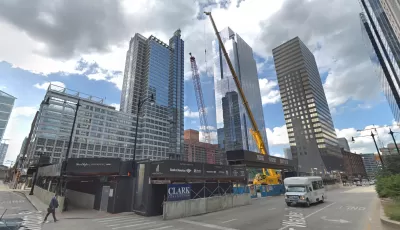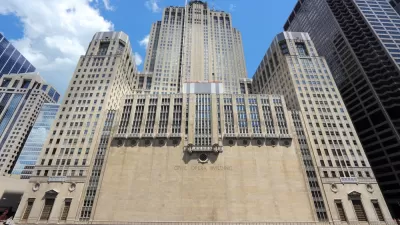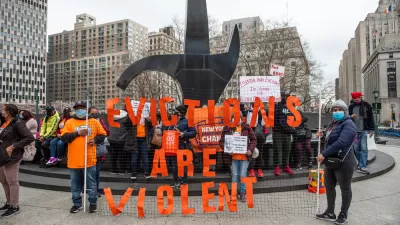A riverfront revival was well underway in Chicago. Then the pandemic hit. How can a splashy new downtown commercial development expect to fare in Covid's world?

The Bank of America Tower recently opened on the Chicago riverfront as the tallest new office building in the city in 30 years by topping out at 816 feet.
With Chicago's central business district (CBD) getting hammered during the pandemic, Blair Kamin offers three reasons to pause and take notice of the new building.
For one, the Bank of America Tower "represents a strong sign of confidence" in the CBD despite its current travails. For another reason, the building will add a $25 million boost in property tax revenue to a city government that is, similar to the CBD, suffering the effects of the economic downturn caused by the pandemic.
Finally, "The modernist design, a mix of bold structural drama, attractive public spaces and reflective-glass banality, will leave its mark on downtown long after the COVID-19 pandemic has passed," writes Kamin.
The new building is located on a site described by Kamin as high profile and transit oriented at 110 N. Wacker Drive. Prominently, the new building is the latest sign of how the Chicago River has become a focal point of civic and commercial life.
"Skyscrapers, like the neighboring Civic Opera Building at 20 N. Wacker, once turned their back on the polluted river. No more," writes Kamin.
A key question about the building's success still looms, however, given the current state of the economy and the large numbers of office workers staying home during the pandemic—whether by choice or by necessity of unemployment. The building's lead tenant, Bank of America, was expecting more than 2,000 employees to be working in the building. Currently, only 200 employees are reporting to the office.
FULL STORY: City’s tallest office building in 30 years opens along Chicago River, mixing drama and banality

Planetizen Federal Action Tracker
A weekly monitor of how Trump’s orders and actions are impacting planners and planning in America.

Chicago’s Ghost Rails
Just beneath the surface of the modern city lie the remnants of its expansive early 20th-century streetcar system.

San Antonio and Austin are Fusing Into one Massive Megaregion
The region spanning the two central Texas cities is growing fast, posing challenges for local infrastructure and water supplies.

Since Zion's Shuttles Went Electric “The Smog is Gone”
Visitors to Zion National Park can enjoy the canyon via the nation’s first fully electric park shuttle system.

Trump Distributing DOT Safety Funds at 1/10 Rate of Biden
Funds for Safe Streets and other transportation safety and equity programs are being held up by administrative reviews and conflicts with the Trump administration’s priorities.

German Cities Subsidize Taxis for Women Amid Wave of Violence
Free or low-cost taxi rides can help women navigate cities more safely, but critics say the programs don't address the root causes of violence against women.
Urban Design for Planners 1: Software Tools
This six-course series explores essential urban design concepts using open source software and equips planners with the tools they need to participate fully in the urban design process.
Planning for Universal Design
Learn the tools for implementing Universal Design in planning regulations.
planning NEXT
Appalachian Highlands Housing Partners
Mpact (founded as Rail~Volution)
City of Camden Redevelopment Agency
City of Astoria
City of Portland
City of Laramie





























